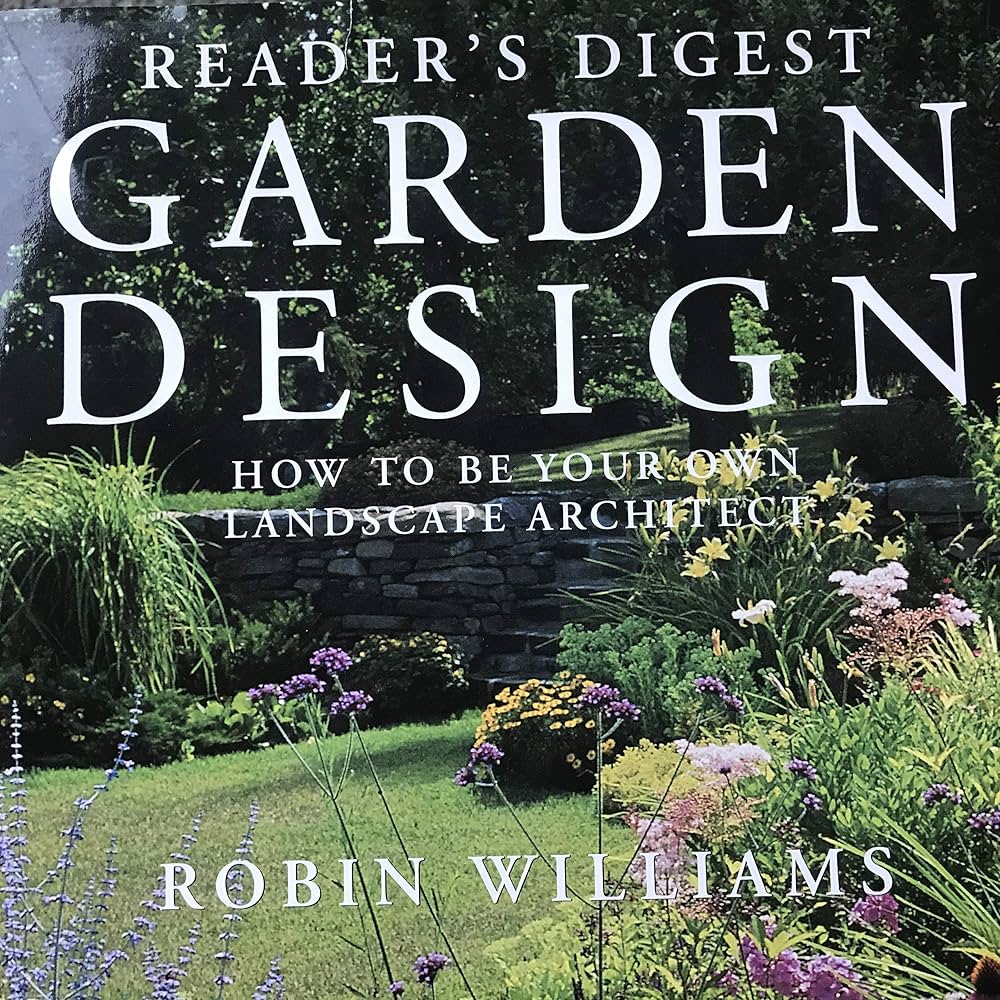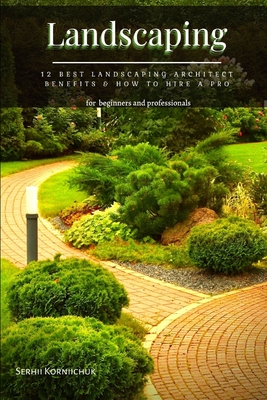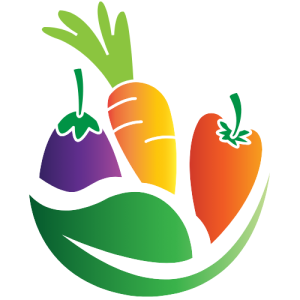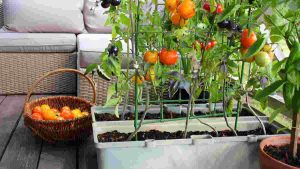Gardening can be a fulfilling hobby. It brings nature into your home.
For beginners, designing a garden might seem daunting. But with the right guidance, it becomes a joyful journey. Books offer a wealth of knowledge, insights, and inspiration. They provide step-by-step instructions, tips, and beautiful illustrations. These resources make learning easy and enjoyable.
Imagine creating a garden sanctuary with vibrant flowers and lush greenery. Picture a space where you can relax and unwind. The right garden design book can help you achieve this vision. It can teach you how to choose plants, create layouts, and maintain your garden. Whether you have a small balcony or a large yard, there’s a book for you. Dive into the world of garden design. Discover books that guide and inspire, turning your gardening dreams into reality.

Credit: www.amazon.com
Introduction To Garden Design
Welcome to the world of garden design! Whether you’re starting with a blank canvas or looking to enhance your existing garden, understanding the fundamentals of garden design can transform your outdoor space into a personal paradise. The beauty of garden design lies in its ability to blend nature with creativity, creating a space that reflects your personality and lifestyle. If you’ve ever felt overwhelmed by the idea of designing your garden, you’re not alone. Many beginners find that with the right guidance, the task becomes not only manageable but also incredibly rewarding.
Why Garden Design Matters
Garden design is more than just planting flowers and shrubs. It’s about creating a cohesive space that invites peace and beauty into your daily life. An effective garden design can enhance the aesthetic appeal of your home, providing a sanctuary where you can relax and recharge. Think about the spaces in your garden that draw you in. Is it the cozy nook under a tree, or perhaps the colorful flower bed near your patio? Your garden should be a reflection of what you love.
Consider the practical side of garden design. Proper planning can save you time and money. By understanding the principles of design, you can avoid costly mistakes and ensure your garden grows beautifully over time. Have you ever planted a tree too close to your house, only to regret it years later? Strategic planning can prevent these headaches.
Benefits Of Reading Design Books
Garden design books are a treasure trove of inspiration and knowledge. They offer insights from experts who have spent years perfecting their craft. Imagine having a seasoned gardener guiding you through each step, sharing tips and secrets that can transform your garden into a masterpiece.
Books provide detailed explanations and visual examples, making complex concepts easy to grasp. You can learn about plant combinations, color schemes, and layout ideas that suit your garden’s size and climate. Have you ever wondered how to create a garden that blooms year-round? Books can offer solutions and strategies tailored to your needs.
Moreover, design books often include personal stories and case studies that can motivate you to experiment and innovate. Reading about others’ successes and challenges can inspire you to try new approaches and develop your unique style. Why not start your journey today and discover what your garden could become?

Credit: www.mcnallyjackson.com
Choosing The Right Book
Choosing the right garden design book can make a big difference. The right book helps beginners understand basic concepts. It inspires new ideas and boosts confidence in garden planning. Books offer guidance, tips, and insight from experts. They are a great resource for anyone starting their gardening journey.
Factors To Consider
Consider the author’s experience and background. Experts offer valuable insights and proven techniques. Look at the book’s content layout. Clear illustrations and diagrams aid understanding. Check reviews from other readers. They highlight the book’s strengths and weaknesses. Choose a book that is easy to follow. Simple language ensures better comprehension for beginners.
Matching Your Style
Think about your garden’s space. A book should align with your available area. Consider your preferred garden theme. Whether modern or rustic, choose a book that matches your taste. Look for books that offer practical advice for your climate. Gardening tips vary by region. Find a book that covers plants you love. Personal interest keeps motivation high.
Top Recommendations
Starting a garden can feel overwhelming. But, the right book can guide you. Here are top recommendations to spark your creativity. Learn from experts and transform your garden space.
Classic Titles
Classic books offer timeless advice. “The Well-Tended Perennial Garden” by Tracy DiSabato-Aust is a favorite. It teaches design principles and plant care. Ideal for novices seeking structured guidance. “The Vegetable Gardener’s Bible” by Edward C. Smith is another gem. It covers planting techniques and soil health. Perfect for those interested in edible gardens.
Modern Picks
Modern books reflect current trends. “Planting in a Post-Wild World” by Thomas Rainer and Claudia West is innovative. It blends ecological ideas with design. Great for eco-conscious gardeners. “The New Gardener’s Handbook” by Daryl Beyers is practical. It simplifies gardening tasks for beginners. A must-have for anyone new to gardening.
Design Basics For Beginners
Explore garden design books perfect for beginners. These guides offer easy tips and ideas for creating beautiful outdoor spaces. Enhance your gardening skills with practical advice and inspiring designs.Embarking on your journey of garden design can be both exciting and daunting. As a beginner, understanding the basics can set a strong foundation for your future garden projects. With the right book by your side, you can learn essential principles, avoid common pitfalls, and start creating a garden that reflects your personality and style. Let’s dive into the basics of garden design that every beginner should know.
Essential Principles
Every garden design begins with a handful of fundamental principles. These principles guide you in shaping and structuring your outdoor space. Balance and proportion are key. Think of how you can create harmony by evenly distributing plants and features. Consider unity in your design. This means your garden should feel like a cohesive whole rather than a collection of random elements. Choose a theme or color palette that ties everything together. Focal points are essential in drawing attention. It could be a vibrant plant, a sculpture, or a water feature. Let your focal point guide the eye through the garden.
Common Mistakes To Avoid
As you begin designing your garden, steer clear of some common beginner mistakes. Overcrowding plants can lead to a chaotic look and unhealthy growth. Give your plants room to breathe and grow. Neglecting sunlight needs is another common error. Pay attention to how much light each part of your garden receives. Choose plants that thrive in those conditions. Avoid ignoring maintenance requirements. Some plants demand more care than others. If you’re new to gardening, start with low-maintenance options to ease your workload. Do you often find yourself overwhelmed by choices? Focus on simplicity. Start small and gradually expand your garden as you gain confidence. By understanding these basics, you can create a garden that not only looks beautiful but also thrives for years to come. Grab a beginner-friendly garden design book, and let it guide you as you turn your outdoor space into a personal oasis.
Inspiration Sources
Discover the perfect garden design books for beginners. Easy tips and clear pictures guide you to create beautiful spaces. Start small and watch your garden grow into a peaceful retreat.Inspiration is the heartbeat of any creative endeavor, and gardening is no exception. As a beginner, finding the right sources of inspiration can transform your garden from a blank canvas into a vibrant masterpiece. Whether you are drawn to the untamed beauty of nature or the intricate details of cultural artistry, the right garden design book can offer the spark you need to get started.
Nature-inspired Designs
Nature offers a wealth of inspiration for garden design. Imagine the serene flow of a forest path or the vibrant colors of a wildflower meadow. Books focusing on nature-inspired designs guide you to replicate these elements in your garden. “Bringing Nature Home” by Doug Tallamy is a great example. It encourages you to use native plants to create a sustainable garden that supports local wildlife. This book shows how you can design a garden that feels as alive and dynamic as the natural world. You might find yourself reconsidering your plant choices after a walk through a local park. That simple stroll can inspire you to add plants that reflect the local ecosystem. By aligning your garden with nature, you create a space that is both beautiful and beneficial.
Cultural Influences
Cultural influences can bring a unique flair to your garden. Different cultures have distinct gardening traditions that can transform your outdoor space. These influences might be just what you need to create a garden with character and depth. Consider the classic elegance of a Japanese Zen garden. Books like “Creating a Japanese Garden” by Peter Chan can guide you in crafting a space that embodies tranquility and simplicity. It helps you integrate elements like stone lanterns and koi ponds, offering a peaceful retreat in your backyard. Alternatively, explore the vibrant colors and patterns of a Moroccan-inspired garden. With the right design book, you can learn how to incorporate tiles, water features, and bold plantings. This approach can turn your garden into a lively and inviting space. What cultural influences resonate with you? Maybe it’s the minimalist lines of Scandinavian design or the lush abundance of an English cottage garden. Whatever your preference, let these influences guide your creativity and bring your garden to life.
Practical Tips From Experts
Starting a garden can be a thrilling yet challenging experience. Experts have shared practical tips in popular garden design books to guide beginners. These tips cover essential aspects of garden creation. From planning to budgeting, they provide valuable insights. Let’s explore some of these expert tips.
Planning Your Space
Decide on the purpose of your garden. Do you want flowers or vegetables? Knowing your goals helps in planning. Consider the size of your space. Smaller gardens need careful plant selection. Larger spaces offer more freedom. Think about sunlight and shade. Different plants have different needs. Experts suggest creating a layout. This gives a visual idea of your garden. Use sketches or digital tools for this step. Planning prevents costly mistakes.
Budget-friendly Ideas
Gardening doesn’t need to be expensive. Start with seeds instead of plants. Seeds are cheaper and offer variety. Look for sales on garden materials. Many stores offer discounts during seasons. Reuse materials like old pots and containers. This saves money and reduces waste. Composting is another cost-saving tip. It enriches soil and saves on fertilizers. Consider sharing tools with neighbors. Community gardens can also reduce costs. Budgeting is key for beginners.
Creating A Personalized Garden
Creating a personalized garden can transform your outdoor space into a unique oasis. It reflects your style, interests, and creativity. For beginners, the right garden design books can provide inspiration and practical advice. These books guide you through the process of making your garden truly yours. They offer insights on how to express your personality and customize elements to suit your taste.
Expressing Your Personality
Your garden should mirror who you are. Think about colors that speak to you. Do you love vibrant reds or calming greens? Consider the shapes and textures you find appealing. A garden design book can help you identify these preferences. It can also suggest ways to incorporate them into your garden.
Some books even include quizzes or exercises. These tools help pinpoint your unique style. They guide you in selecting plants and features that match your personality. This makes your garden not just a space, but an extension of yourself.
Customizing Elements
Customizing elements in your garden adds a personal touch. This could mean choosing specific plants or adding unique structures. Garden design books for beginners often provide step-by-step guides. These guides help you understand how to tailor elements to fit your space.
Learn about pathways, water features, and seating areas. Books can show you how to adapt these to your garden’s size and climate. They also offer tips on integrating art or sculptures. Adding these elements can enhance the garden’s charm and individuality.
Customizing your garden is about making choices that feel right to you. The best books empower you to make these choices with confidence. They offer a wealth of ideas and practical advice, helping you create a garden that’s truly personal.
Enhancing Your Knowledge
Discover the best garden design books tailored for beginners. These guides simplify planning and creating beautiful outdoor spaces. Start your gardening journey with easy-to-follow tips and inspiring ideas.Enhancing your knowledge is key to mastering garden design, especially if you’re just starting out. As you dive into the world of garden design books for beginners, there’s an abundance of resources that can deepen your understanding and ignite your creativity. These resources can complement your reading and help you apply what you’ve learned in practical, effective ways.
Workshops And Courses
Attending workshops and courses can transform your theoretical knowledge into practical skills. Many local gardening centers and community colleges offer hands-on workshops that focus on specific aspects of garden design. From learning about soil types to mastering planting techniques, these sessions provide valuable real-world experience. Online courses also offer flexibility and variety. Platforms like Coursera and Udemy host garden design courses tailored for beginners. You can learn at your own pace and revisit complex topics until they become second nature. Networking is an additional benefit of workshops. You meet fellow enthusiasts who share your passion and can offer unique insights. Have you ever found that discussing ideas with others sparks your creativity in unexpected ways?
Online Resources
The internet is a treasure trove of gardening knowledge. Websites like the Royal Horticultural Society or Garden Design Magazine offer articles, videos, and guides that can supplement your learning from books. These resources are updated regularly, ensuring you have the latest information at your fingertips. Joining online forums and social media groups dedicated to garden design can also be incredibly helpful. You can ask questions, share your progress, and receive feedback from a community that supports your journey. Have you ever considered how valuable it is to have a global community just a click away? YouTube is another excellent resource for visual learners. Channels dedicated to gardening provide step-by-step tutorials and project ideas. Watching these videos can make complex concepts more accessible and inspire you to try new techniques in your garden. Enhancing your knowledge through these resources can make your garden design journey more rewarding and enjoyable. Which resource will you explore first to elevate your gardening skills?

Credit: www.gardencentermag.com
Frequently Asked Questions
What Is The Best Gardening Book For Beginners?
“The Vegetable Gardener’s Bible” by Edward C. Smith is ideal for beginners. It offers easy-to-follow instructions and practical tips. This book covers essential gardening techniques, soil preparation, and plant care. Beginners find it a comprehensive guide to starting their gardening journey successfully.
How Do I Get Started In Garden Design?
Begin by researching garden design principles and styles. Assess your space and decide on a theme. Sketch a layout, considering plants, pathways, and focal points. Gather necessary tools and materials. Start planting and arranging elements, ensuring harmony and functionality. Continuously learn and adapt your design for the best results.
What Is A Good Garden Layout For A Beginner?
Start with a simple rectangular garden layout. Divide it into sections for vegetables, herbs, and flowers. Ensure pathways allow easy access for watering and harvesting. Choose easy-to-grow plants like tomatoes, basil, and marigolds. Keep taller plants at the back, shorter ones at the front for sunlight access.
What Is The Best Gardening Book Of All Time?
“The Vegetable Gardener’s Bible” by Edward C. Smith is often considered the best gardening book. It offers practical advice, detailed techniques, and organic gardening tips. This comprehensive guide is perfect for both beginners and experienced gardeners, making it a timeless resource for growing vegetables successfully.
Conclusion
Exploring garden design books can spark creativity in beginners. These books offer simple guides and practical tips. Perfect for those new to gardening. They make complex ideas easy to grasp. With these resources, anyone can craft a lovely garden. Each book provides unique perspectives and inspiration.
Dive into these pages and let your garden ideas bloom. A beautiful outdoor space awaits. Start your journey with these helpful reads. Enjoy the process and watch your garden grow. Happy gardening!





